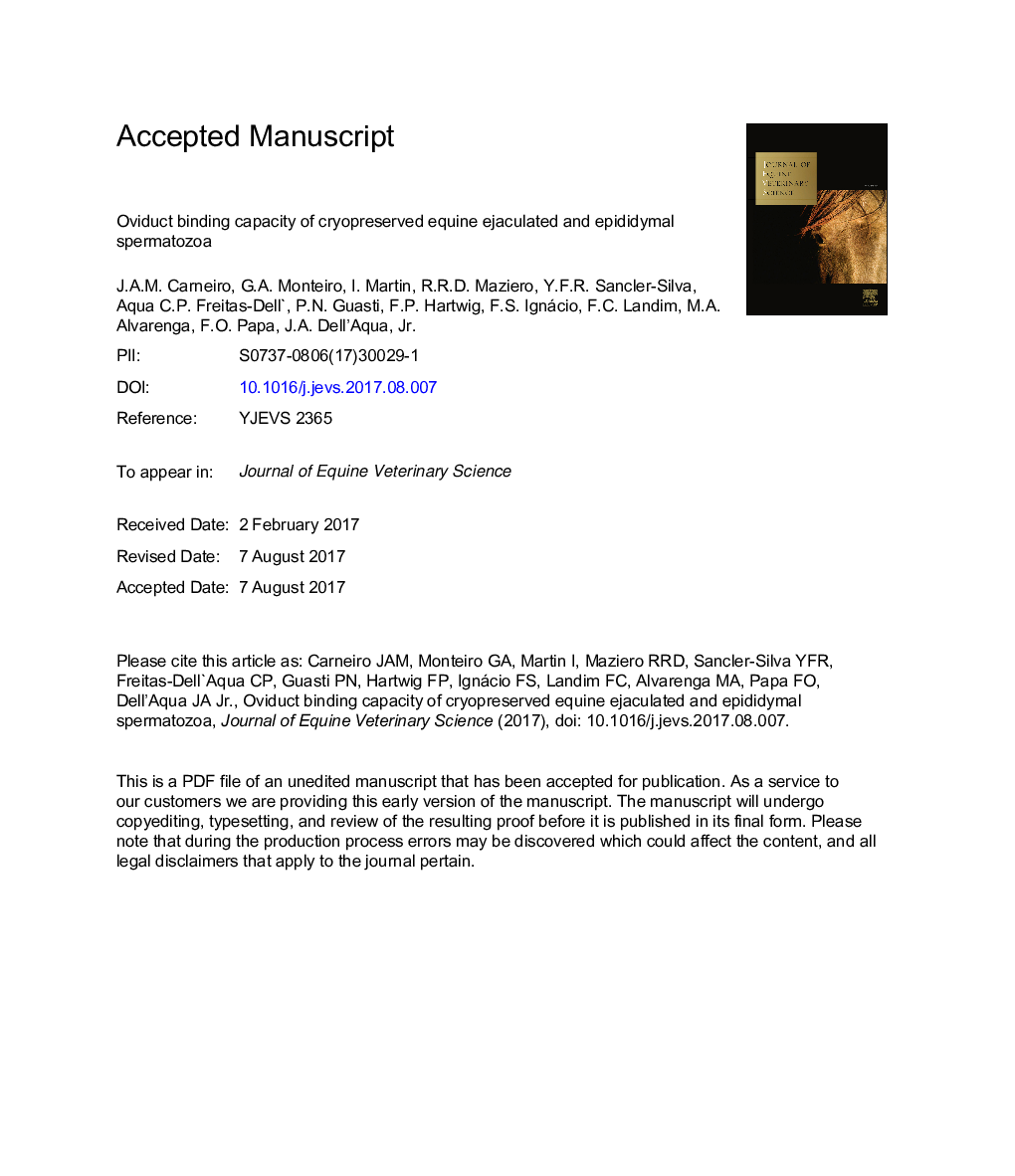| Article ID | Journal | Published Year | Pages | File Type |
|---|---|---|---|---|
| 5535602 | Journal of Equine Veterinary Science | 2017 | 31 Pages |
Abstract
This study investigated the binding capacity of equine spermatozoa (both ejaculated and from different epididymal regions) to the oviductal epithelial cells (OECs) culture, before and after cryopreservation, using an oviduct explant assay. Ejaculated and epididymal sperm from caput, corpus, and cauda of 10 stallions were diluted and submitted to freezing process. Fresh and frozen-thawed sperm were evaluated for sperm kinematics, plasma membrane integrity (PMI) and incubated with oviduct explants. The cryopreservation process decreased significantly the sperm motility parameters of ejaculated sperm, and corpus and cauda epididymal sperm (P < .05). The percentage of PMI was significant higher in fresh samples versus frozen-thawed samples, in all analyzed groups (P < .05). Binding of ejaculated spermatozoa to oviduct epithelium was significantly higher than caput, corpus, or cauda epididymal sperm (P < .05). The caput epididymal sperm showed no binding capacity to oviduct explants; thus, significantly more sperm recovered from the corpus and cauda epididymis were bound to OEC compared to caput epididymal sperm (PÂ < .05). No differences were observed in ejaculated and epididymal sperm before and after cryopreservation (P > .05). In conclusion, the ejaculated sperm has higher binding capacity than epididymal sperm, suggesting that the seminal plasma plays an important role in the establishment of the oviductal sperm reservoir. The cryopreservation process did not affect the binding capacity of ejaculated or epididymal spermatozoa to oviductal epithelium.
Keywords
Related Topics
Life Sciences
Agricultural and Biological Sciences
Animal Science and Zoology
Authors
João Alexandre Matos Carneiro, Gabriel Augusto Monteiro, Ian Martin, Roziaria Rosario Dias Maziero, Yame Fabres Robaina Sancler-Silva, Camila de Paula Freitas-Dell'Aqua, Priscilla Nascimento Guasti, Rafael Bandeira, Felipe Pires Hartwig,
